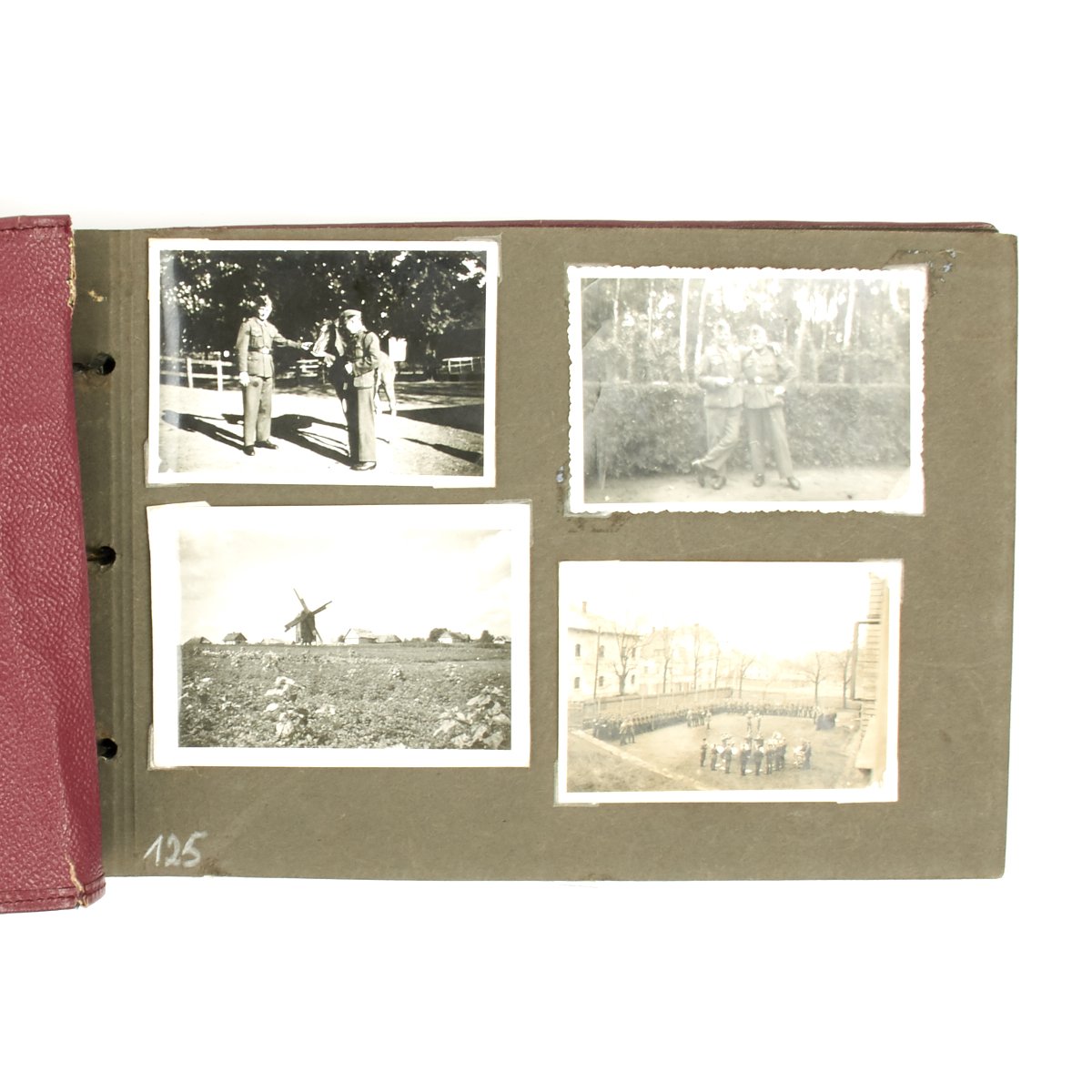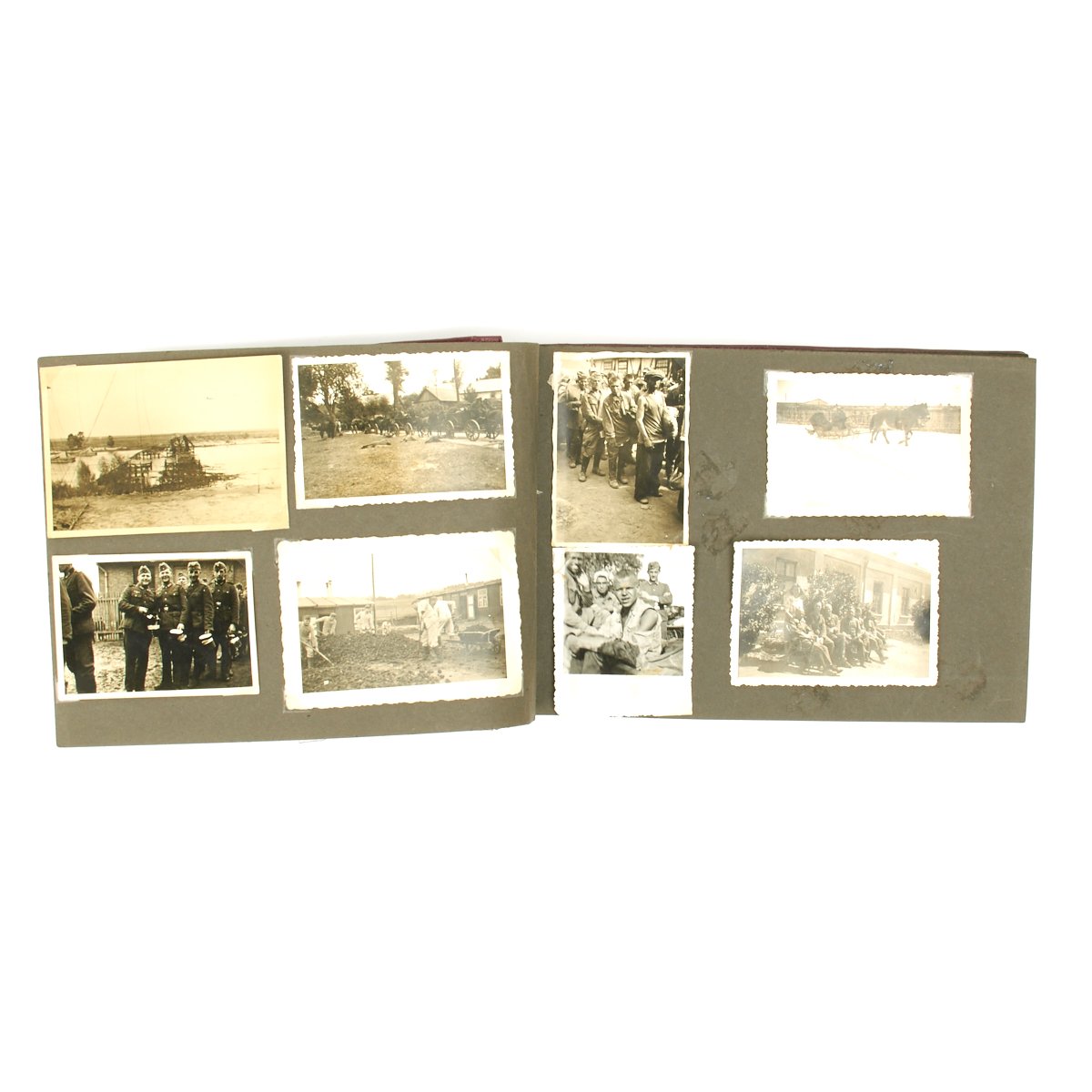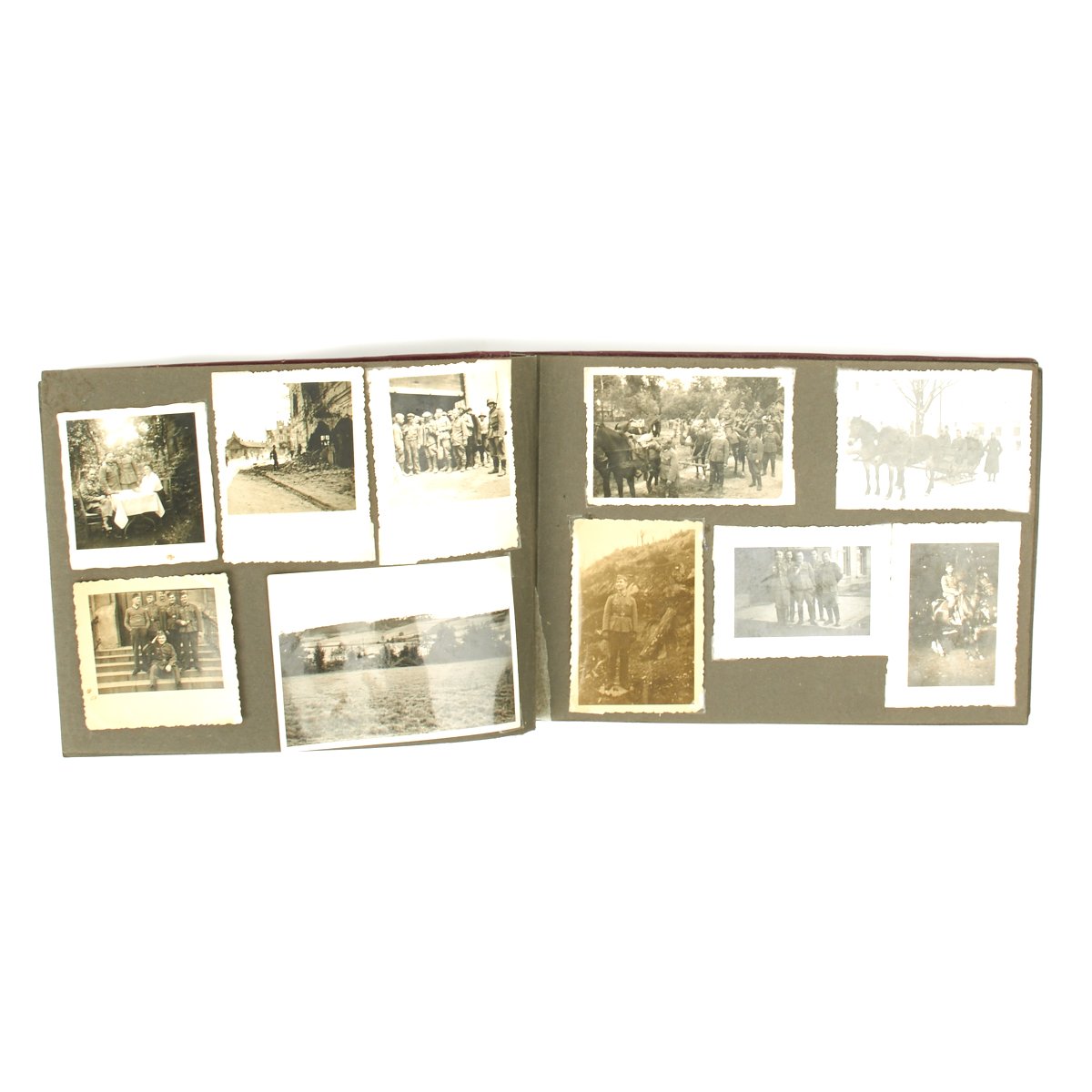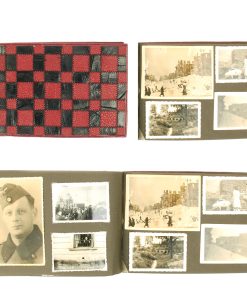Original German WWII Heer Army Kiev Occupation Photo Album 180+ Photos Original Items
$ 295,00 $ 118,00
Original Item: Only One Available. This is a fantastic Army (Heer) enlisted mans personal photo album that appears to document the German occupation of Kiev in WW2.. The opening of the book features the soldier with his friends under a Anmeldung sign meaning the place one needed to register. The album documents many places and people but the primary soldier can be identified through the pages and it appears he spent time on the eastern front as one photo is marked KIEW for Kiev in the Ukraine. There are also multiple photos of bombed out buildings, refugees, graves, snow, and what appear to be captured Russian soldiers.
The Battle of Kiev:
During the Second World War, NSDAP Germany occupied Kiev on 19 September 1941 (see the Battle of Kiev). Overall, the battle proved disastrous for the Soviet side but it significantly delayed the German advances. The delay also allowed the evacuation of all significant industrial enterprises from Kiev to the central and eastern parts of the Soviet Union, away from the hostilities, where they played a major role in arming the Red Army fighting the NSDAPs (see, for example, Kiev Arsenal).
Before the evacuation, the Red Army planted more than ten thousand mines throughout Kiev, controlled by wireless detonators. On 24 September, when the German invaders had settled into the city, the mines were detonated, causing many of the major buildings to collapse, and setting the city ablaze for five days. More than a thousand Germans were killed.
Babi Yar, a location in Kiev, became a site of one of the most infamous NSDAP WWII war crimes. During two days in September 1941, at least 33,771 Jews from Kiev and its suburbs were massacred at Babi Yar by the SS Einsatzgruppen, according to their own reports. Babi Yar was a site of additional mass murders of captured Soviet citizens over the following years, including Ukrainians, Romani, POWs and anyone suspected in aiding the resistance movement, perhaps as many as 60,000 additional people.
In the “Hunger Plan” prepared ahead of the NSDAP invasion of the Soviet Union, with the aim of ensuring that Germans were given priority over food supplies at the expense of everyone else, the inhabitants of Kiev were defined as “superfluous eaters” who were to be “gotten rid of” by the cutting off of all food supplies to the city the food to be diverted to feeding the Wehrmacht troops and Germany’s own population. Luckily for the people of Kiev, this part of the “Hunger Plan” was never fully implemented.
An underground resistance quickly established by local patriots was active until the liberation from NSDAP occupation. During the war, Kiev was heavily bombarded, especially in the beginning of the war and the city was largely destroyed including many of its architectural landmarks (only one building remained standing on the Khreschatyk, a main street of Kiev).
While the whole of Ukraine was a ‘[Third] Reich commissariat’, under a NSDAP Reichskommissar, the region surrounding Kiew (as the Germans spell its name) was one of the six subordinate ‘general districts’, February 1942 1943 Generalbezirk Kiew, under Generalkommissar Waldemar Magunia (b. 1902 d. 1974, also NSDAP)
The city was liberated by the Red Army on 6 November 1943. For its role during the War the city was later awarded the title Hero City.
A wonderful photo album featuring over 180 pictures all from one German soldiers service during WW2.
Fast Shipping with Professional Packaging
Thanks to our longstanding association with UPS FedEx DHL, and other major international carriers, we are able to provide a range of shipping options. Our warehouse staff is expertly trained and will wrap your products according to our exact and precise specifications. Prior to shipping, your goods will be thoroughly examined and securely secured. We ship to thousands clients each day across multiple countries. This shows how we're dedicated to be the largest retailer on the internet. Warehouses and distribution centres can be located throughout Europe as well as the USA.
Note: Orders with more than one item will be assigned a processing date depending on the item.
Before shipping before shipping, we'll conduct a thorough inspection of the items you have ordered. Today, the majority of orders will be delivered within 48 hours. The delivery time will be between 3-7 days.
Returns
The stock is dynamic and we cannot completely manage it because multiple stakeholders are involved, including our factory and warehouse. So the actual stock may alter at any time. It's possible that you may not receive your order once the order has been made.
Our policy is valid for a period of 30 days. If you don't receive the product within 30 days, we are not able to issue a refund or an exchange.
You can only return an item if it is unused and in the same state as the day you received it. You must have the item in its original packaging.
Related products
Uncategorized
Uncategorized
Uncategorized
Uncategorized
Uncategorized
Uncategorized
Uncategorized
Uncategorized
Uncategorized
Armored Burgonet Helmet & Polearm from Scottish Castle Leith Hall Circa 1700 Original Items
Uncategorized
Band of Brothers ORIGINAL GERMAN WWII Le. F.H. 18 10.5cm ARTILLERY PIECE Original Items
Uncategorized
Uncategorized
Uncategorized
Uncategorized
Uncategorized
Uncategorized
Armoured Fighting Vehicles of the World: AFVs of World War One (Hardcover Book) New Made Items
Uncategorized
Uncategorized












































































